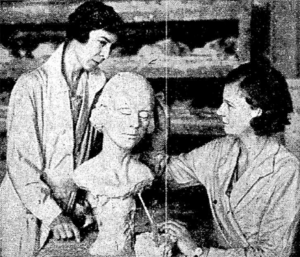Jessamine Buxton facts for kids
Jessamine Victoria Alexandrine Buxton (1895–1966) was a talented artist and sculptor from South Australia. She created many different types of art during her life.
Her Artistic Journey
Jessamine went to Adelaide High School. She was very good at art and won a special scholarship to study at the South Australian Royal Society of Arts. She even won another scholarship that would have let her travel and study art in other places, but her father did not allow her to go. So, Jessamine stayed in South Australia her whole life, where she painted and showed her artworks often in Adelaide.
In 1915, during World War I, Jessamine designed a special Christmas card for soldiers. It wished them good luck and a safe return home from the war.
After many years of studying art, Jessamine began to teach at the South Australian School of Arts and Crafts. She was a very important art teacher and helped many students, including the famous South Australian sculptor and artist John Stuart Downie. Another influential female artist and teacher from that time, Marie Tuck, also taught Downie.
Special Recognition
Jessamine Buxton received several awards for her amazing art.
- She was offered the Society of Arts prize, which was a travelling scholarship.
- In 1936, she won First Prize at the Autumn Exhibition for her painting called Still Life No 11 Zinnias.
- She also received a Society of Arts prize for her modelling (sculpture) work.
Art Materials and Styles
Jessamine Buxton was skilled in many different art forms. She used a variety of materials, including:
- Pastels
- Watercolours
- Sculpture
- Silverpoint drawing (a very old way of drawing using a silver wire)
- Miniature painting (tiny, detailed paintings)
- China painting
- Needlework
During the war, a doctor named Henry Newland asked Jessamine to sketch human organs after they were removed. This was because there were not enough photographers available at the time. Her detailed drawings helped doctors understand more about the human body.


